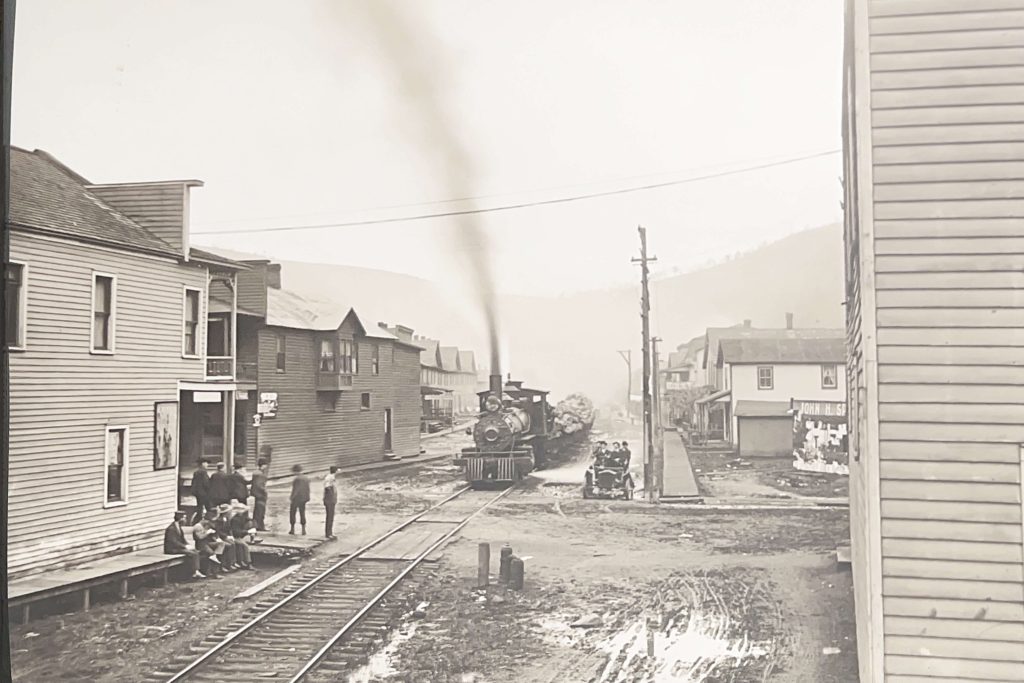Heritage / Wood On Glass
Heritage / Wood On Glass

The growth of Cross Fork was phenomenal after a large sawmill opened there on May 3, 1894. Four months after the mill converted its first tree into boards, the local newspaper, the Tribune, boasted that Cross Fork had: “2 drug stores, 3 meat markets, 5 grocery stores, 3 millinery shops, 1 hardware, 1 boot and shoe store, 1 cigar factory, 1 furniture store, 5 billiard rooms, 4 barber shops, 3 blacksmiths, 4 hotels, 8 boarding houses, 2 liveries, 1 shingle mill, 1 clothing store, 1 opera house, 2 secret societies, 1 jewelry store, 1 bakery, 1 confectionary store, 25 building contractors, 120 dwelling houses, 75 carpenters, and 800 laboring men there and in the vicinity.” By 1913 Cross Fork had become a ghost town.
Wood On Glass
Two men work together with a crosscut saw, removing a trunk section of a peeled hemlock tree that broke when it fell across another tree already down. A break like this was undesirable, for sawmills could not create boards from the tree unless the damage was removed. Loggers prid... Read more
© 2025 Lumber Heritage Region LLC | Website Designed & Hosted by Pixel & Hammer